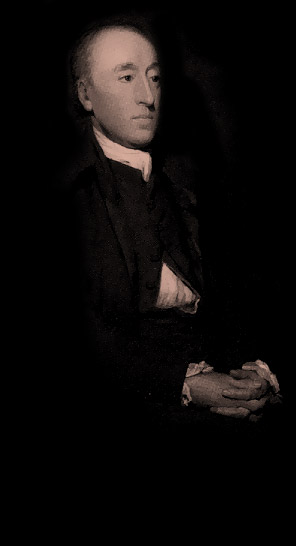- Biography
- Discoveries
- Read online
- Reading list
- Useful links
- Places to visit
- Did you know?
-
After James Hutton's death his sister gave his collection of fossils to Dr Joseph Black.
Black, in turn, presented them to the Royal Society of Edinburgh, to be used to illustrate 'Hutton's Theory of the Earth'.
James Hutton (1726-1797)
Discoveries
Hutton is credited with being the founder of modern geology. Among his ideas:
- The Earth is continually being formed.
- Sedimentation takes place very slowly. Even the oldest rocks are made up of 'materials furnished from the ruins of former continents'.
- Heat from within the Earth is involved in mineralisation, which proves the existence of unconformities in rock layers.
Theory of the Earth
Hutton had formulated controversial theories of the origin of the earth and of atmospheric changes known as 'uniformitarianism'. This paved the way for modern geological science.
His ideas about the age of the Earth were in opposition to the prevailing view of the Church, which believed that our planet was only around 6,000 years old.
Hutton disputed the views held at the time by Neptunists, who believed that rocks developed in a great flood. He also disagreed with Plutonists, who thought that all rocks were of igneous origin.
Studying formations along Scotland's Berwickshire coast at Siccar Point, Hutton discovered that sedimentary rocks originated through a series of successive floods.
He also observed that igneous rocks were distinct from sedimentary deposits and recorded the gradual actions of geomorphic processes, like weathering and erosion.
Theory of Rain
In 1784, Hutton presented his 'Theory of Rain' to the Royal Society of Edinburgh.
He proposed the idea that:
- Warmer air holds more water vapour
- The cooling of air can lead to rain.
Hutton studied rainfall and climate data on different regions of the world. He concluded that rainfall everywhere is regulated by:
- Humidity of the air
- Causes which promote mixtures of different aerial currents in the higher atmosphere.
It is unclear if it was Erasmus Darwin – Charles Darwin's grandfather – or James Hutton who first suggested this theory. However Hutton did study the decrease in temperature, linking it with height.
Hutton also devised a wet-bulb thermometer to measure humidity. However a 'Mr Leslie' came up with the same idea independently. Leslie's idea was used to develop what is now a widely-used instrument.


